目录
1.丢失更新问题(Lost updates problem)
2.未提交依赖问题 / 脏读问题(Uncommitted dependency / Dirty read problem)
3.异常分析问题(Incorrect analysis problem)
三、并发控制、调度(Concurrency Control & Schedule)
一、事务的定义、性质
what is Transaction:
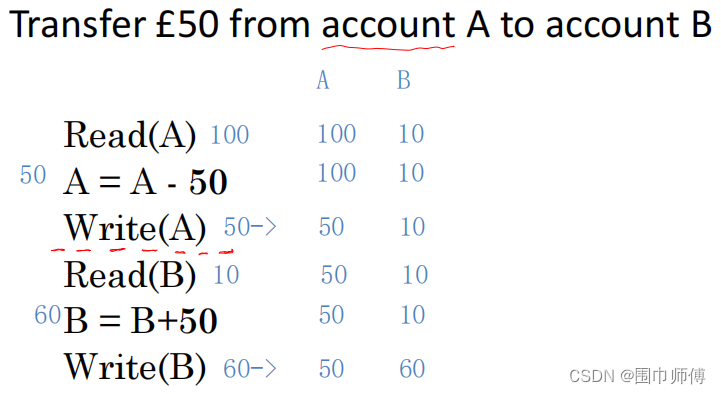
4 Properties:
- Atomicity:‘All or nothing’ property,a transaction is performed in its entirety or is not performed at all;The logic unit of work
- Consistency:Must transform database from one valid state to another.

- Isolation:Partial effects of incomplete transactions should not be visible to other transactions.
- Durability:Effects of a committed transaction are permanent and must not be lost
二、并发问题(Concurrency Problem)
1.丢失更新问题(Lost updates problem)
一个事务改写了另一个事务已经上传的结果
![]()
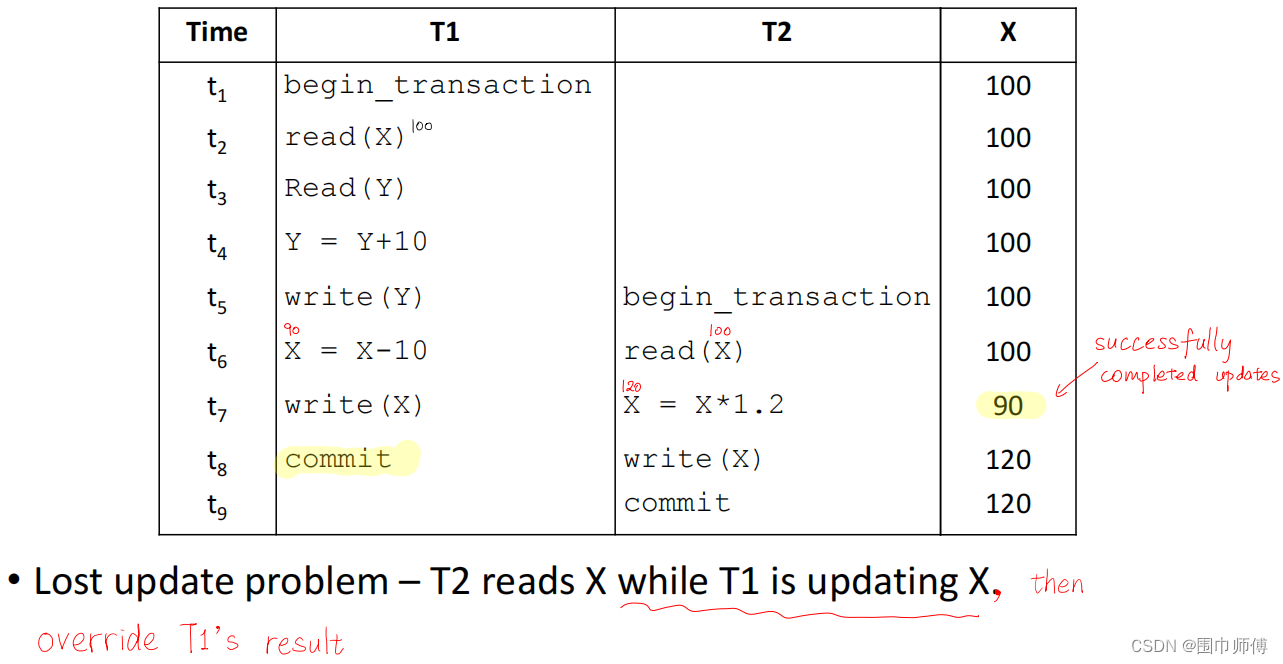
2.未提交依赖问题 / 脏读问题(Uncommitted dependency / Dirty read problem)
一个事务读入别的事务正在加工的数据项;
“Rollback Problem”:它造成的结果多半是T1已经rollback,可T2还在用已经废止的数据值处理问题,最终结果也不正确

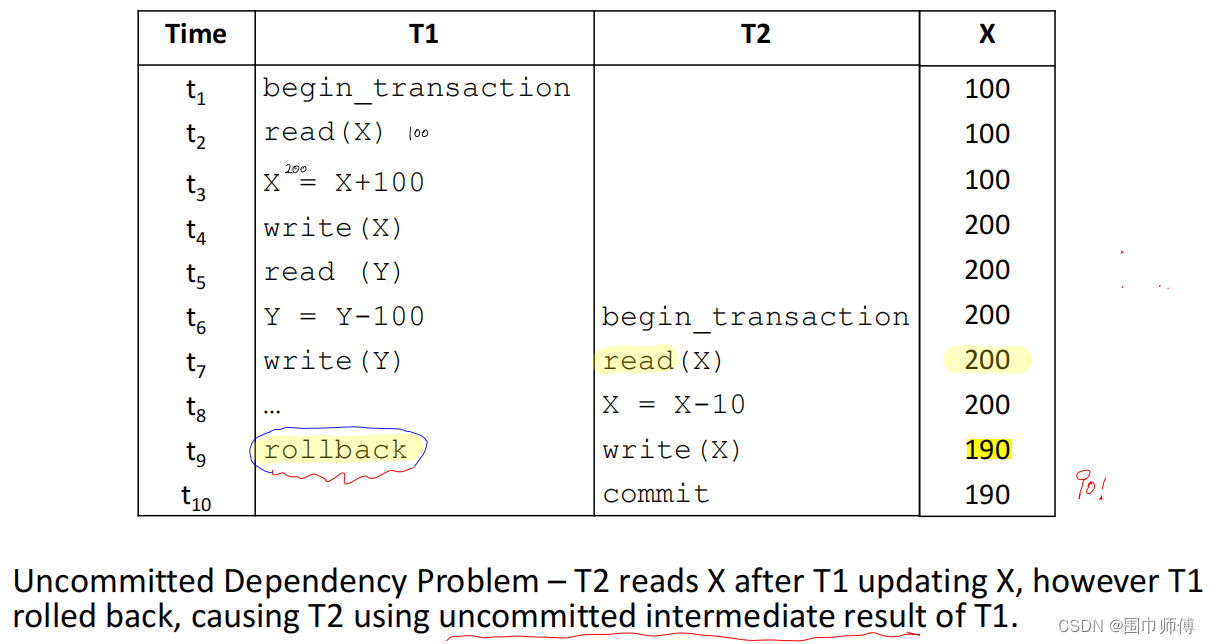
3.异常分析问题(Incorrect analysis problem)

不像前两种problem,问题大概率出在被读取再改写的值X、Y本身;而是出在由他们推导产生的新数据出错(如加和sum等),原因是X、Y等值的改写与得出新数据的值两种操作顺序出现了错位(如用原来的X算出了sum后,才把新X成功上传)。
Eg.

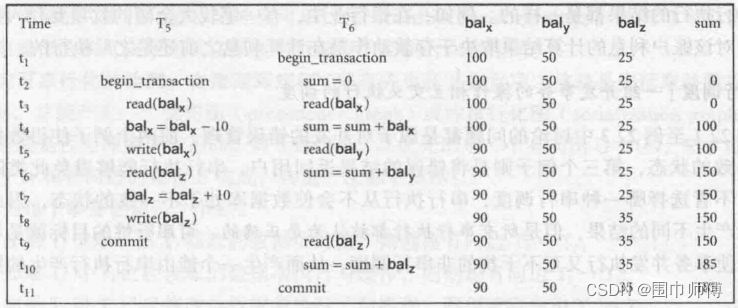
三、并发控制、调度(Concurrency Control & Schedule)
-
Concurrency control : process of managing simultaneous(同时的) operations on the database without having them interfere(干扰) with one another
-
schedule: a sequence of the operations by a set of concurrent transactions that preserves the order of the operations in each of the individual transactions
-
serial schedule(串行调度): a schedule where operations of each transaction are executed consecutively without any interleaved operations from other transactions
四、上锁(Locking)
- Locking is a conservative approaches for concurrency control - delay transactions in case they conflict with other transactions
- Transaction uses locks to deny access to other transactions and so prevent incorrect updates
- 分为两种:
共享锁(又叫读锁) Shared lock(read lock):和其他事务共同使用数据
互斥锁(写锁) Exclusive lock(write lock):阻拦其他事务使用该数据

- Before reading from a resource a transaction must acquire a read-lock
- A transaction may not acquire a lock on any resource that is write-locked by another transaction
数据源只能同时上1个互斥锁,一个事务上了,其他的就暂时上不了
- A transaction may not acquire a write-lock on a resource that is locked by another transaction
不管那个数据源现在身上有什么锁,只要有,就不能再上互斥锁
上了read-lock,只能对它再上read-lock而不是write-lock;而上了write-lock,就什么也不能再上了
-
If the requested lock is not available, transaction waits
两相锁(Two-Phases Locking,2PL)
- All locking operations precede unlock operation in the transaction
每个要锁的数据开头先全锁上,最后再全解开,所有上锁的操作必在所有解锁操作之前即可。
- Every transaction must lock an item (read or write) before accessing it 先锁再读
Once a lock has been released, no new items can be locked
- what is Two phases?
2PL解决三大并发问题:
1.Lost Update Problem

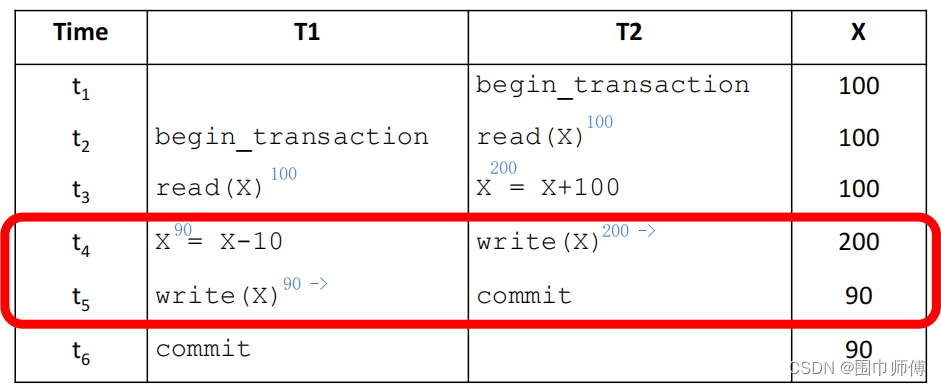
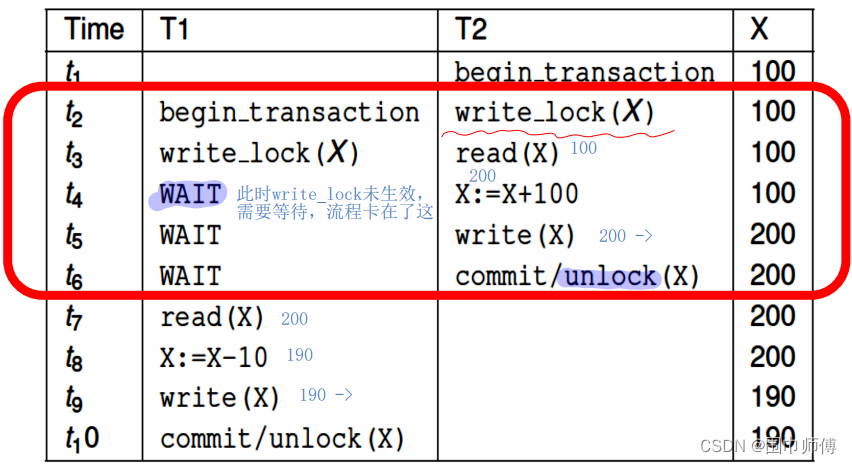
注意:虽然最终T1还是改变了T2改写过的X,但它和 lost update不一样。这次T1不仅上传,而且读入的都是T2处理完的X,这说明T1本就需要T2先处理后的X——T1依赖于T2!
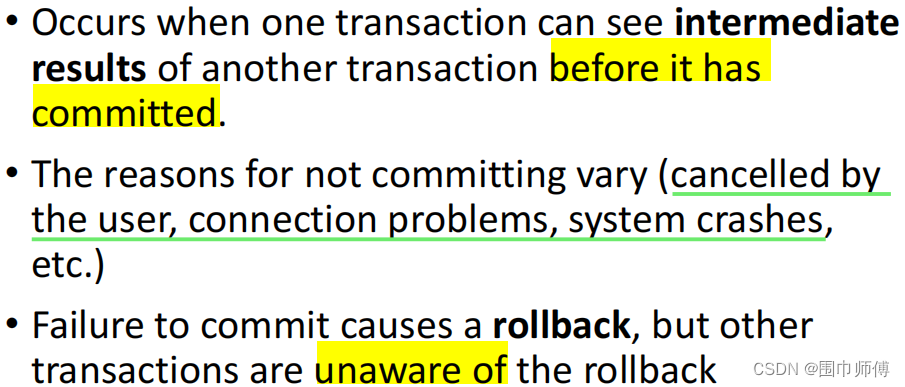
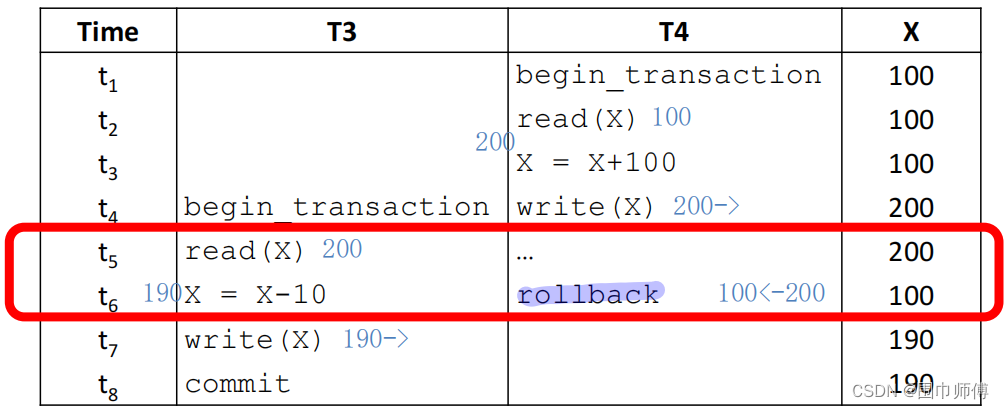

3.Inconsistent Analysis Problem
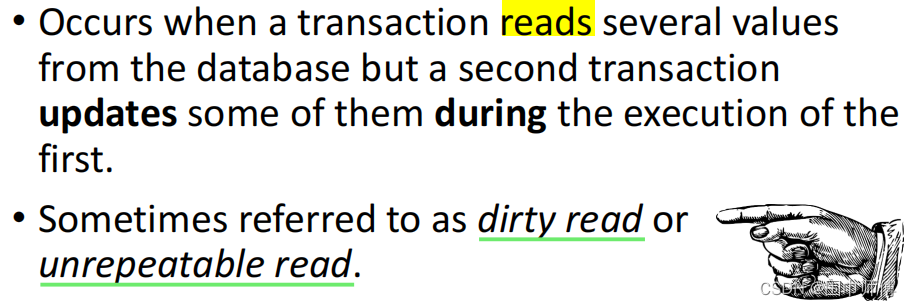
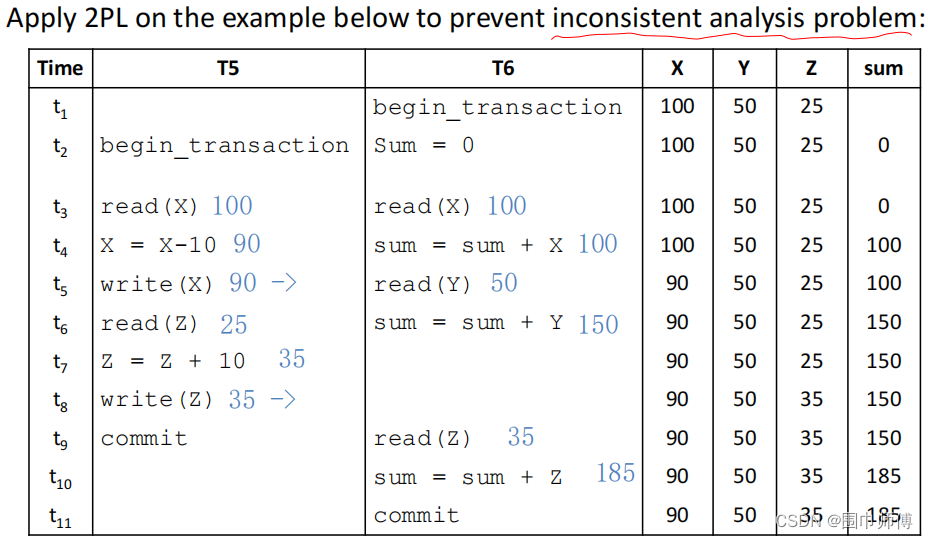
90+50+35 = 185 ?!
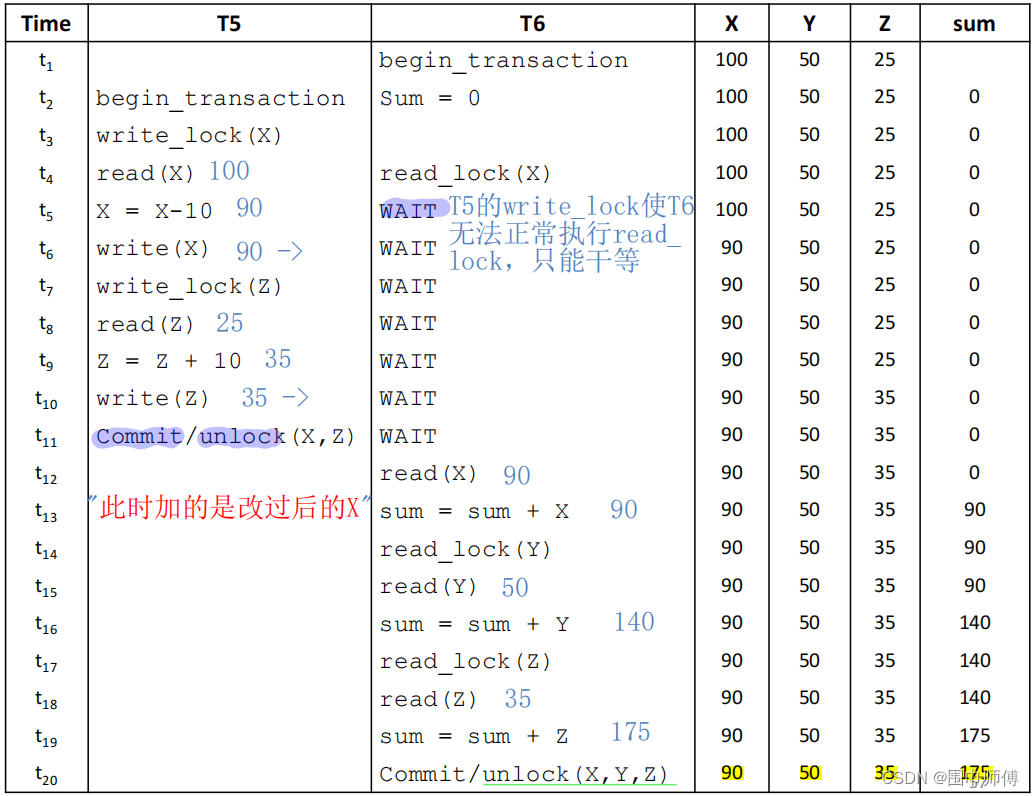
五、可串行性(Serialisability)
- Nonserial Schedule: Schedule where operations from set of concurrent transactions are interleaved. 可参考serial schedule,它的对立面;各个事务你中有我我中有你
- Objective of serialisability is to find nonserial schedules that are equivalent to some serial schedule. Such a schedule is called serialisable.

如:某调度A包含事务T1、T2,T2全过程夹在T1前半段和后半段之间,之类的,如果调度A实际效果=调度B(先T1 |||| 后T2),或者调度A=调度C(先T2 |||| 后T1),那么A就可以被串行化
- A schedule is conflict serialisable(冲突可串行) if transactions in the schedule have a conflict but the schedule is still serialisable.
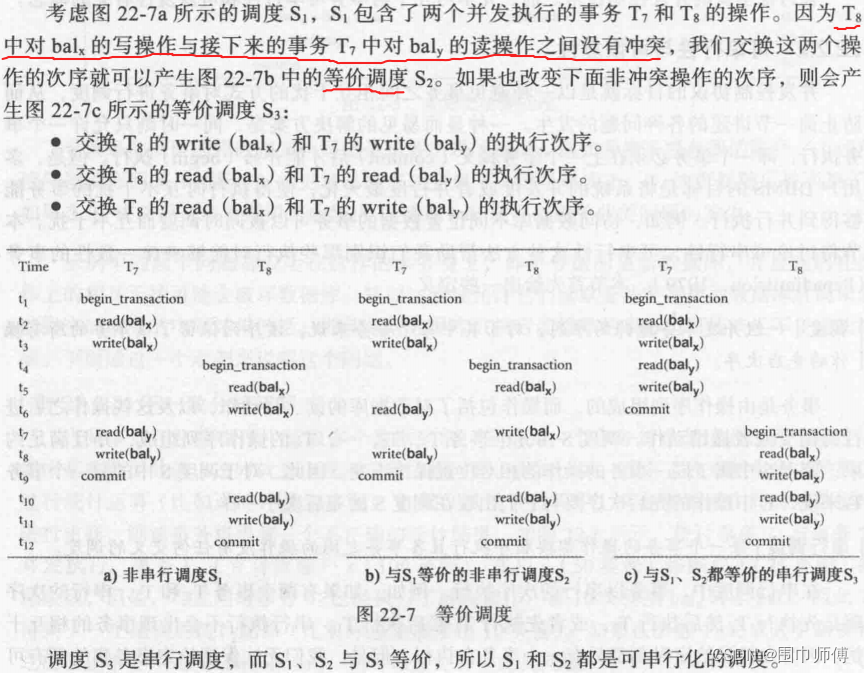
![]()
- Two transactions have a conflict If at least one is a write and they use the same resource.

Details:
- Transaction T1 reads data items A, B and C, a concurrent transaction T2 reads data items B, C, and D, and write data item D. Then T1 and T2 have NO conflict!
尽管都作用于B、C,但只有D被写了
-
The timing locks released is important for serialisable schedules
-
Two-phase locking (2PL) can guarantee serialisability
注:部分内容参考自图书《数据库系统-设计、实现与管理(基础篇)》






















 2348
2348











 被折叠的 条评论
为什么被折叠?
被折叠的 条评论
为什么被折叠?








